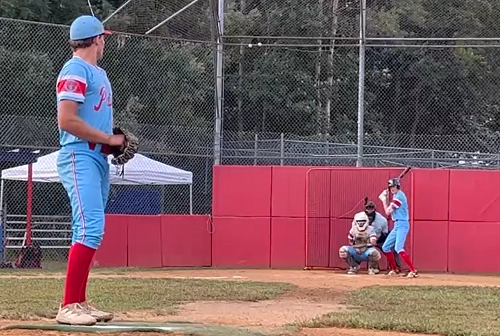
Seton Hall Baseball commit Reno Spagnoli, rising senior at Columbia High School in New Jersey, had quite a spring. Reno started training at RPP Baseball, in October 2021. At the time, he was just coming off a PBR event where he sat 81-82, touching 83 mph. Fast forward to this summer, Reno was recently sitting 90-91, touching 92 at an event in Boston. His velo has increased approximately 10 mph. Additionally, he had a stellar spring both pitching and at the plate, with a 1.50 ERA and a 0.414 batting average.
How did he do it?
Although his training with us began approximately a year and a half ago, in this athlete highlight summary we are going to review his progress during the past year. His training last summer began with an initial assessment, which included the following:
-
- Lean Muscle Mass and Body Fat %
- Movement screen
- Video analysis and motion capture
- Strength testing
- Power testing
At the time of his assessment last June, Reno was 5’11” and weighed in at 189 lbs. His body fat percentage was at 12% and his height to weight ratio was a respectable 2.7x, well within the 2.5-3.0x target that we look for in high performance athletes. He also presented with good baseline lower body strength and power.
Below is a summary of what we identified as Reno’s “lowest hanging fruit”, which essentially became the focus of his training during the past off-season in order to give him what he needs while maintaining what he does well.
1. Mobility
At first glance, Reno’s lowest hanging fruit from a mobility standpoint was:
-
- Back Leg Hip ER
- Dominant Arm Shoulder IR / Posterior Cuff Strength
- S. Leg Stability
Let’s break these down one at a time.
Back Leg Hip ER – Everyone’s hip structure is different. Some athletes will struggle to move in positions that require more Hip IR or Hip ER. While working on mobility is a no-brainer, we also have to use this info to tailor Reno’s movement towards the plate with a bit of a “toe-out” starting position to align with his compromised hip mobility going into ext. rotation (ER).
Dominant Arm Shoulder IR / Posterior Cuff Strength – Reno presented with a weak posterior cuff which was negatively affecting his ability to decelerate his arm after release. This continued “bang” into IR at finish was more than likely causing internal rotation to get a bit “gritty” as well.

S. Leg Stability – There are few movement patterns that we assess that bear more weight than single leg stability due to the simple fact that pitchers spend the majority of their time on one leg. This more than likely played a big role in his video analysis presenting with an “early heel” off the rubber as well as fairly low angular velocities in his post up leg reading on his mocap. Fast forward to June 2023 and we can see that Reno’s hard work has paid off based on his stability cleaning up on both legs.
June 2022

June 2023

2. Upper Body Strength / Power
Reno already presented with an above average deadlift for his size so we weren’t expecting big jumps in the lower half, but as highlighted below, big gains were made in his upper body strength. This combined with getting him back some shoulder IR as well as improving the strength of his posterior cuff would help hip be more powerful / explosive in his upper half while helping him to better disperse the stress of throwing harder. Below, we can see a 21% increase in upper body strength year-over-year.
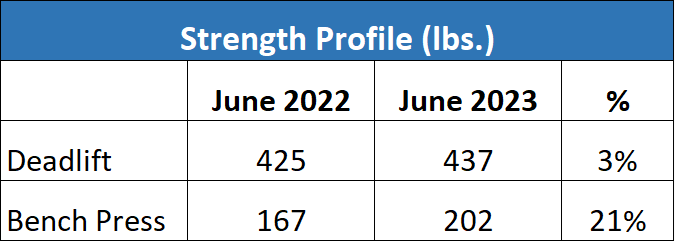
3. Pitching Mechanics
Our video and motion capture analysis looks at over 60 different disconnects, from arm action to trunk movement to lower half movement patterns. It leaves no stone unturned, especially when it comes to including metrics that generally can’t be seen by the naked eye.
Reno’s pitching and motion capture report pointed to several disconnects that we thought needed to be addressed in order to get him to a higher potential velo ceiling and clean other issues in the delivery.
We combine our motion capture report with a video analysis into one report. This helps us better pinpoint timing issues such as angular velocities and timing between segments that can’t be seen by the naked eye. Just to be clear, one isn’t better than the other, we believe both are extremely helpful.
Motion Capture Summary
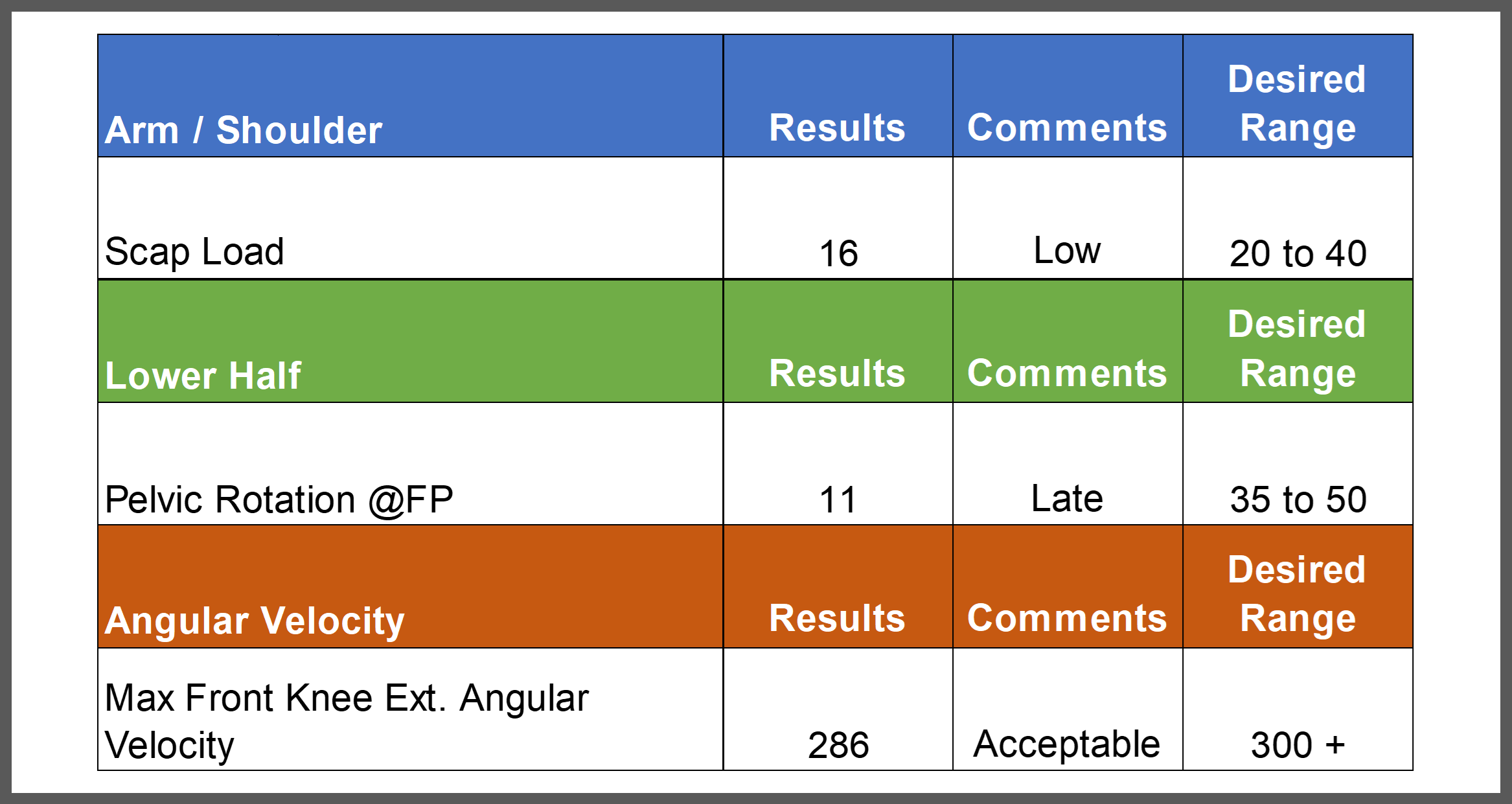
Shoulder Abduction / Scap Load – Performing a good scap load helps resist early trunk rotation while maintaining a good trunk stack into foot plant. It’s also a key player in producing good hip / shoulder separation and has been associated with higher ball velocity (Stodden et al., 2005).
Late Pelvis Rotation @ FP – A late pelvis will cause the hips to be too closed (<35 degrees) at FP, making it hard to facilitate rotation and could be negatively affect the stability of the lead leg. This could also be contributing to the low angular velo score we see in Reno’s knee ang. velo score in his mocap (listed below). We generally look for the hips to be partially open (35 to 50°) at foot plant.
Knee ext. Angular Velocities – While Reno’s ability to efficiently “post-up” was borderline, improving his single leg stability will go a long way in improving the speed at which he transfers force with the lead leg.
Video Analysis Summary
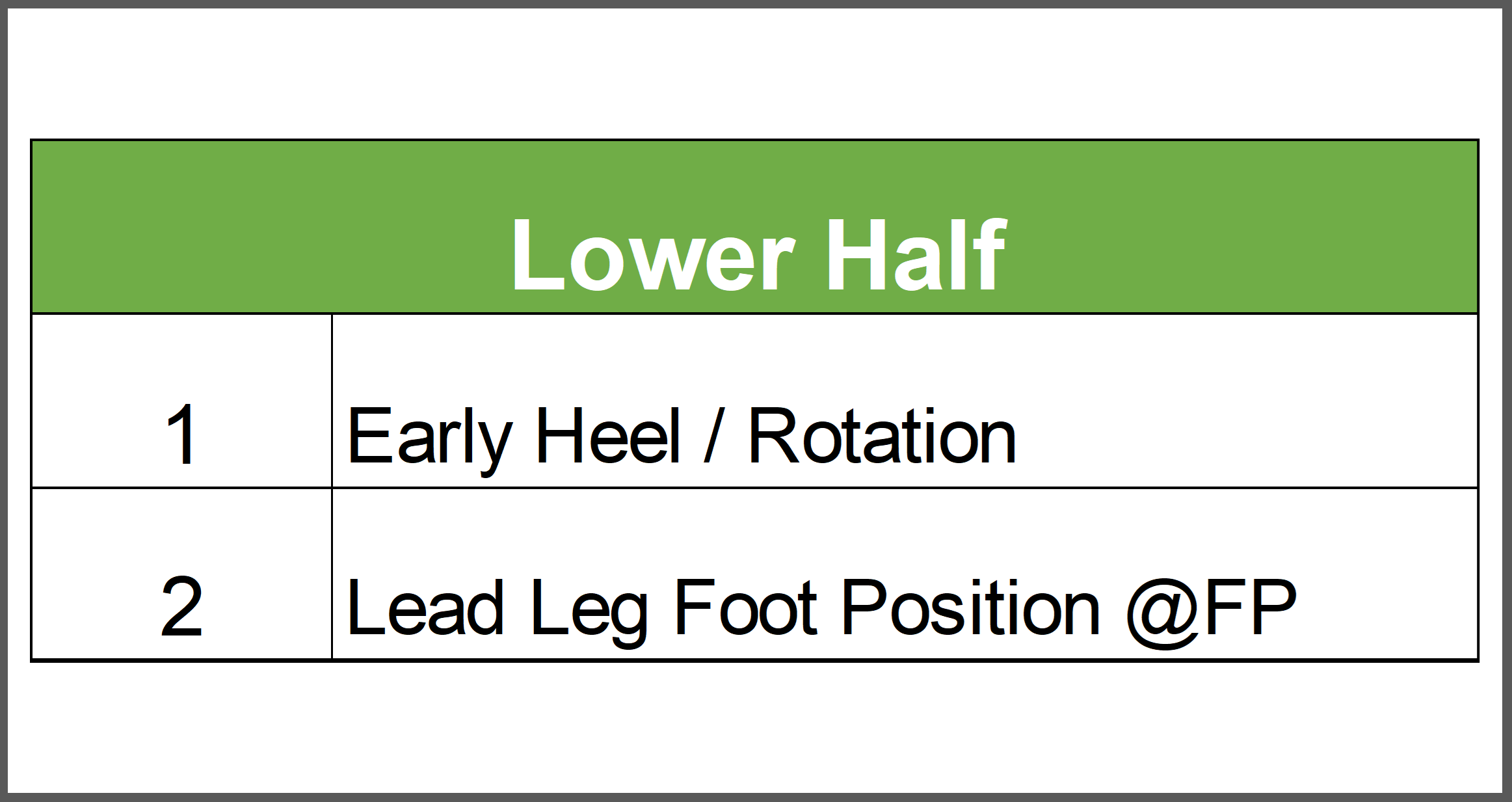
Early Heel – The back heel should stay engaged fully with the ground until just before foot plant to avoid becoming linear and killing rotation. This is a direct result of how each individuals hip mobility is taken into consideration when loading the back leg. Considering that Reno was lacking adequate hip ER in his back leg, changing the orientation as explained in the mobility section of this article was a quick fix.
Lead Leg Foot Pos @ FP – By keeping the lead foot slightly closed (between 0-20 degrees) at foot plant allows the pitcher to create a more stable position to help decelerate the throw as well as a strong support to throw against. This in turn, helps efficiently block and transfer force up the kinetic chain.
Throwing Drills – A Step Back drill was prescribed to address his early heel / push in his pre-throw as was a figure 8 rocker to have him start his delivery feeling the front foot in a better position.
Recent Results
The following is a summary of Reno’s performance this past spring. His stats speak for themselves. As mentioned earlier, at the time Reno began his training in October 2021, he was just coming off a PBR event where he sat 81-82, touching 83 mph. Fast forward to this summer, Reno was recently sitting 90-91 mph, touching 92 at an event in Boston. His velo has increased approximately 10 mph. It’s also important to highlight that Reno’s WHIP numbers have also improved significantly, recently at 0.93 vs. from 1.59 in the prior year.
One final note, although Reno doesn’t train at RPP as a hitter, it’s clear from his hitting stats that his work in the weight room has also had an impact on his performance at the plate. Extra base hits generally correlate highly with additional strength and power.
Well done Reno, keep up the great work!
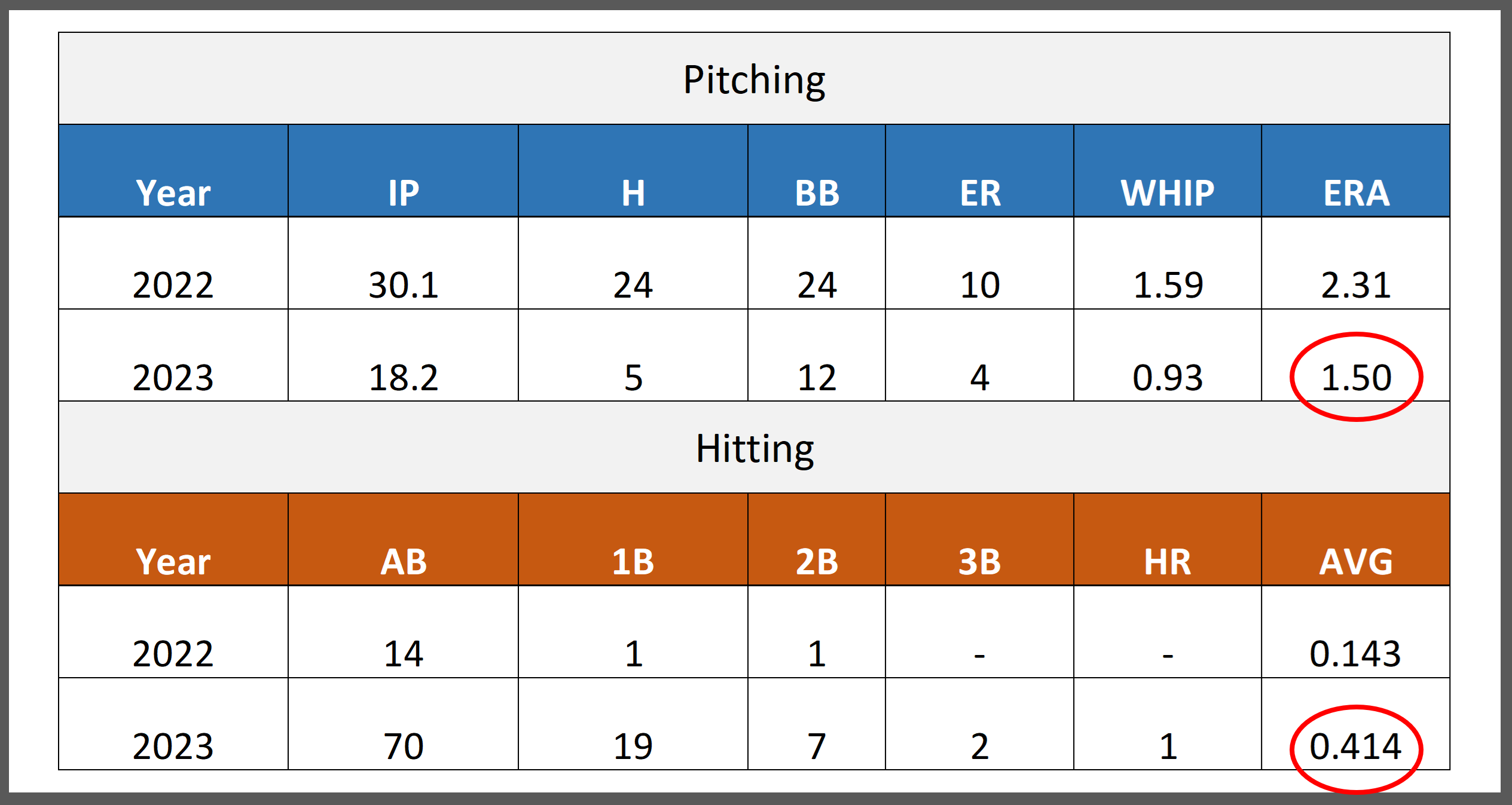
See ya’ in the gym…
By Nunzio Signore and Bahram Shirazi (Owners at RPP Baseball)
You live too far to train with us in-house at RPP? You can now train with us on a REMOTE basis.


